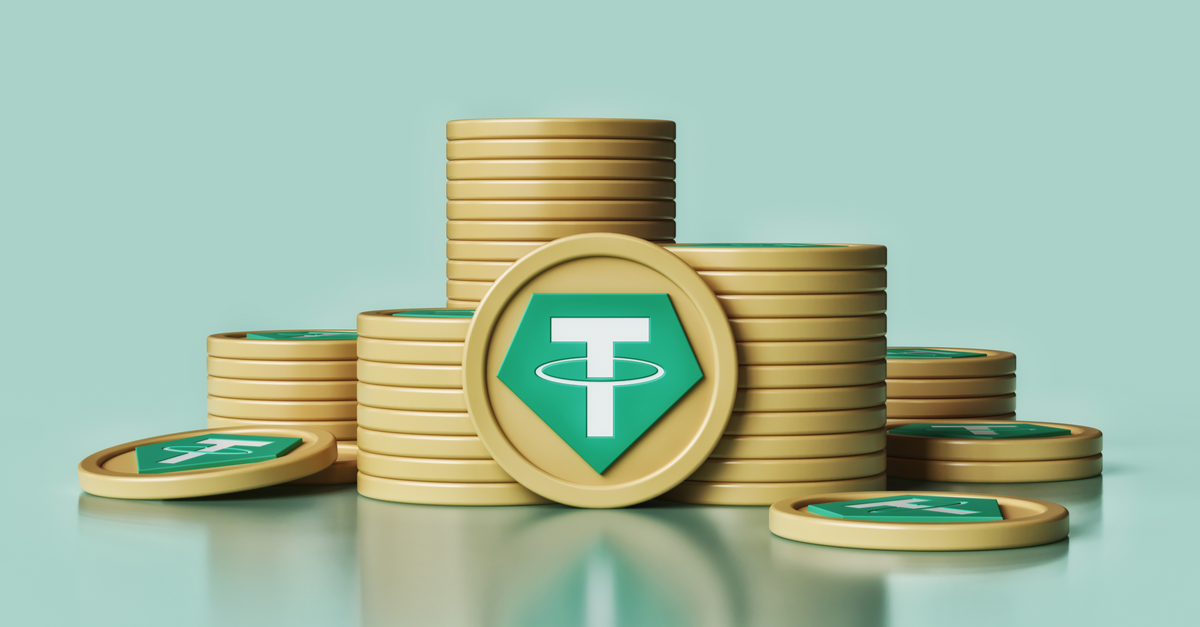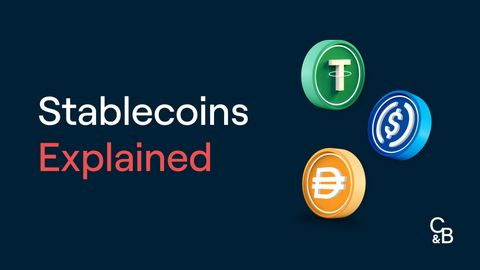Stablecoins are some of the most highly traded coins on the market. In some weeks, Tether outpaces Bitcoin in trading volume.
Why are so many flocking to a coin that rarely changes in value?
Are some stablecoins really backed by gold?
Keep scrolling to learn more about these very unique “stablecoins” and how they might be of use to you in the world of cryptocurrency.
What Are Stablecoins?
Stablecoins are a class of alternative cryptocurrencies (altcoin) that attempt to offer relative price stability. Their market value is usually pegged to the value of a stable asset, like the US dollar or gold.
Stablecoins are designed to be resistant to volatility, so you won’t see significant price changes.
Stablecoin projects claim to be backed by a reserve asset (e.g. US dollar), another cryptocurrency (e.g DAI), or a precious metal. Some stablecoins use algorithms to continually adjust their price to account for demand and supply dynamics.
Through the use of algorithms, or through pegging their value on a different asset, stablecoins function more like a fiat currency within a crypto space. Highly liquid, they are often traded at high volumes; similar to cash in a traditional market.

How Do Stablecoins Work?
Stablecoins achieve their price stability via collateralisation (backing) or through algorithmic mechanisms of buying and selling the reference asset or its derivatives.
A company, like Tether (USDT), can claim that every coin they create is backed by a reserve asset in their possession. Traders trust that the company is solvent and does have the actual assets it claims to have.
As long as the company has the assets (crypto, fiat, or precious metals), the price should reflect the value of the pegged asset.
Most Common Stablecoin Use Cases
- Gateway to DeFi: For traders, stablecoins are often a gateway into decentralised finance (DeFi). They are by far the most traded and accepted coins across decentralised and centralised exchanges (DEX/CEX) due to their ability to function as currency in the DeFi space.
- As Everyday Currency: A majority of large stablecoins are pegged to USD, so they are meant to be $1 today, tomorrow, and so on. Less volatility makes stablecoins a reasonable alternative for facilitating DeFi transactions for goods, services, and more.
- As a Trading Pair: Stablecoins will often pair with the most popular cryptocurrencies, making for simplified trades between different types of coins. They help facilitate the most liquid transactions due to their popularity (USDT in particular).
- Lending & Borrowing: Stablecoins can also be used for lending and borrowing. Traders can lend a portion of their assets to a borrower, in hopes of a yield after the borrowing period has ended. Often secured against other cryptocurrencies, stablecoin loans are often taken out as specific DeFi platforms might only accept stablecoin deposits.

Types of Stablecoins
The 4 common types of stablecoins are listed as follows:
Fiat-Backed
These cryptocurrencies claim to be pegged to a legal tender of a particular country. Common examples include Tether (USDT), USD Coin(USDC), and True USD (TUSD).
The majority of these coins are created and managed by a central authority, but not the same authority as the fiat currency they are pegged to. Rather, the authority is a private company that issues tokens equivalent to the amount of fiat currency in their reserves. Traders trust that the company’s ledger and reporting are true, a topic that has come under the spotlight on various occasions, such as with Tether.
Crypto-Backed
We know what you’re thinking, crypto backed by more crypto? How does this work?
Crypto-backed stablecoins are often overcollateralised to account for potential fluctuations within the market. A prime example of this would be the ‘on-chain’ cryptocurrency, Dai (DAI).
Let’s say a crypto-backed stablecoin is worth $1. This $1 will be tied to a reserve made up of another cryptocurrency, or selection of them, with a total value always greater than the stablecoin’s total circulating supply more than $1. If the backing currencies lose value, the stablecoin could still be worth $1 due to the built-in buffer reserve, accounting for price changes.
This class of coins often utilises smart contracts, removing the need for third parties to validate transactions on the network. This decentralised approach to management differentiates crypto-backed stablecoins from many fiat-backed ones.
Commodity-Backed
These types of stablecoins use a precious metal, like gold, to affirm their value. The stablecoin price will be pegged to the commodity’s – price fluctuations of the underlying commodity will then be reflected in the related stablecoin.
Centralisation could be seen as a disadvantage by some investors. The trade-off is that you get a level of stability backed by an asset that has a proven track record in traditional markets.
Commodity-backed stablecoins also facilitate investments in assets that may otherwise be out of reach locally. For instance, in many regions, obtaining a gold bar and finding a secure storage location is complex and expensive. Gold is seen as a hedge against stock market volatility. Precious metal-backed stablecoins are introducing this concept of ownership to the world of cryptocurrency.
Algorithmic
Considering most stables are backed by another asset, algorithmic coins go against the grain; they aren’t backed at all.
This type of stablecoin does not rely on fiat or crypto as collateral. Instead, it has a smart contract set up that attempts to adjust its market cap based on price fluctuations.
Let’s say an algorithmic coin is pegged to the US dollar. Some market activity causes the price of the stablecoin to rise above the 1:1 peg.
Supply of stablecoin will increase , bringing the price back down in line with the 1:1 peg. If the price falls, the coin supply is automatically cut off. This creates scarcity, which causes the price to rise again.
The most well-known example was TerraUSD (UST), but that dramatically collapsed tainting the class of stablecoin. There are, however, algorithmic stablecoins still circulating , such as Ampleforth (AMPL) and the Tron network’s Decentralised USD (USDD). It’s worth noting their market caps are a fraction of the better-known, reserve-backed stablecoins.
Why Are Stablecoins Important?
Stablecoins fill a void in cryptocurrency that some of the major coins have a difficult time fulfilling. Some of the many reasons why stablecoins are important include:
- A streamlined way to access the DeFi market.
- A highly functional everyday cryptocurrency.
- Potential to ‘firm-up’ smart contracts whose terms can be easily influenced by crypto market fluctuations.
- Through the use of smart contracts, some stables are decentralised.
Possible Risks Associated With Stablecoins
As with any cryptocurrency, fiat currency, precious metal, or another asset, investing will always bring a level of risk to all parties involved. There are some disadvantages to having stablecoins:
- Markets can be volatile. Just because a coin is considered “stable” it does not mean it is completely unaffected by market changes.
- Unclear operational rules and opaque reporting means there is no dedicated authority to regulate the robustness and validity of these projects.
- Lending stablecoins can offer a yield to investors, but it is a very conservative way to invest in cryptocurrency.
While regulations are being introduced by governments around stablecoins, the approach isn’t consistent, so the protections offered to investors are still weak. At present, there is no standard methodology to rule whether a stablecoin project has the solvency needed to back its coin.Investors make do with the transparency reports submitted by stablecoin providers regarding the state of their reserves, free of government oversight.
Stablecoins are also a relatively new concept within cryptocurrency. Lack of time in the market could make some investors wary of their use cases.
Further reading: Blockchain and Cryptocurrency Laws and Regulations 2022
Current Regulations
With the current stablecoin market exceeding $150 billion, policymakers are stepping in to regulate the space. In October 2021, the International Organization of Securities Commissions proposed that stablecoins be regulated in the same ways as payment systems and clearinghouses. The proposition would target specific coins (not every stablecoin) that it believes could impact these financial institutions.
More recently, Congressman Patrick McHenry was optimistic US Congress could pass a Stabelcion law in 2024. While momentum has been slow, we’ll continue to monitor this space for changes.
FAQs
Where can I buy stablecoins?
Through an exchange (centralised or decentralised), or through a broker like us.
What is the top stablecoin by market cap today?
As of April 9th, 2024 Tether is the top stablecoin with a market cap of US$107,030,546,905.
Is Bitcoin a stablecoin?
Bitcoin does not include any of the common characteristics of a stablecoin (backing or steady price point) and is therefore not a stablecoin.
What does pegged mean in crypto?
A pegged cryptocurrency is a crypto whose value is tied to the value of another existing asset. Changes in the value of the original asset affect the pegged cryptocurrency accordingly.
What are stablecoins used for?
Stablecoins are used for everyday DeFi transactions, trading pairs, and for maintaining a highly liquid position on exchanges. They are also used for lending and borrowing.
Purchase Your First Stablecoin with Caleb & Brown
Stablecoins are considered to be the foundation of DeFi. Their ease of use and high liquidity could help any trader diversify their portfolio.
Caleb & Brown is the world's leading cryptocurrency brokerage for those looking to invest in digital assets.
Our personalised broker service makes crypto investing simple. A dedicated member of our broker team is always on hand to guide you along the way, giving you the confidence you need to navigate the world of crypto. Not to mention key features such as:
- No joining or signup costs
- Industry-leading storage solutions
- 24/7 customer support
If you are ready to take the next step and invest in crypto, contact your crypto broker today.
Not yet a client? Sign up for your free consultation.
Disclaimer: This assessment does not consider your personal circumstances, and should not be construed as financial, legal or investment advice. These thoughts are ours only and should only be taken as educational by the reader. Under no circumstances do we make recommendation or assurance towards the views expressed in the blog-post. Past performance is not a reliable indicator of future results. The Company disclaims all duties and liabilities, including liability for negligence, for any loss or damage which is suffered or incurred by any person acting on any information provided.
from Caleb & Brown Cryptocurrency Brokerage.
